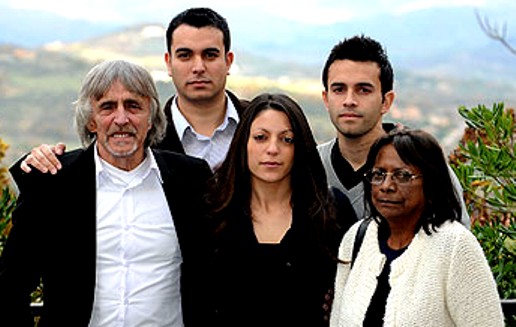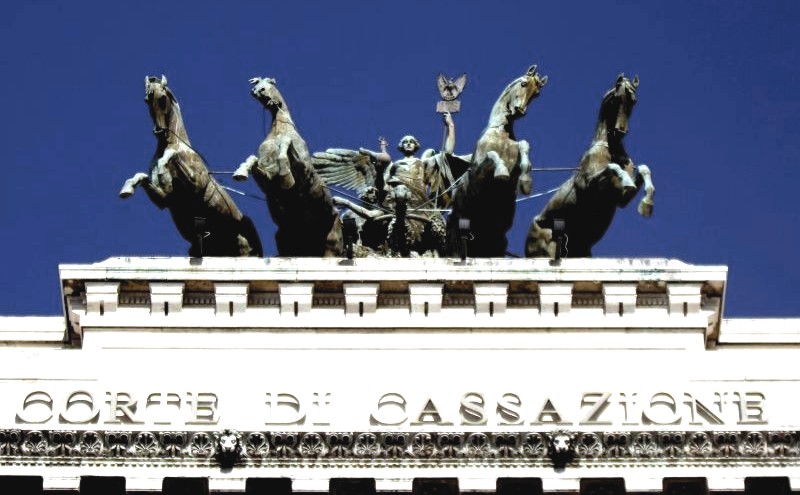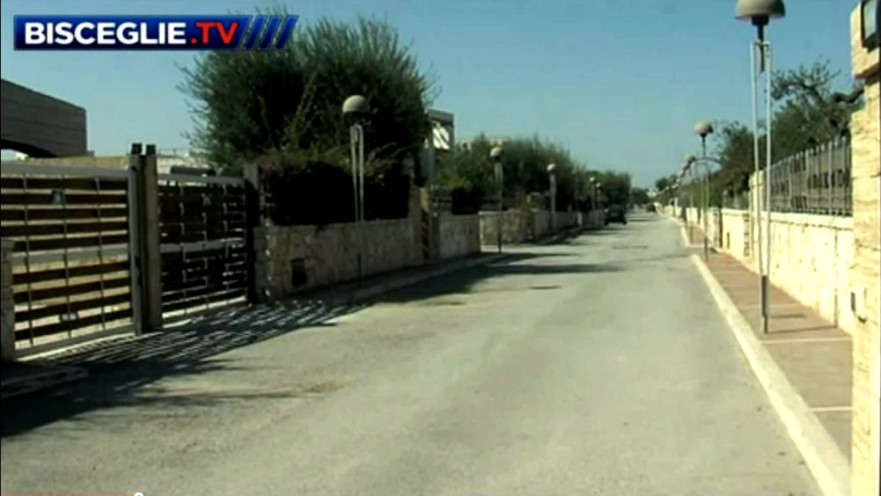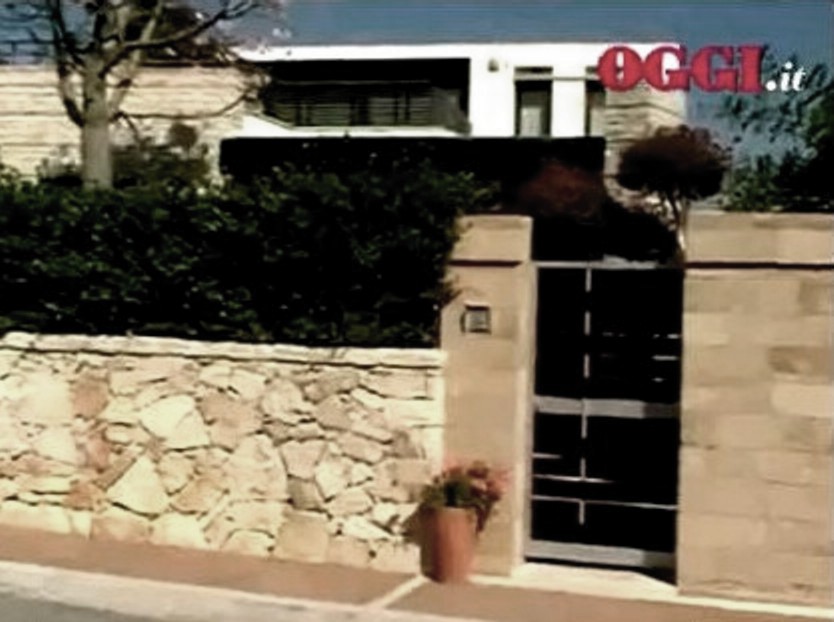
Category: Defendants in court
Tuesday, September 18, 2012
Questions For Sollecito: Katie Couric, Push Back Against Sollecito’s Bluster And False Facts #2
Posted by Our Main Posters
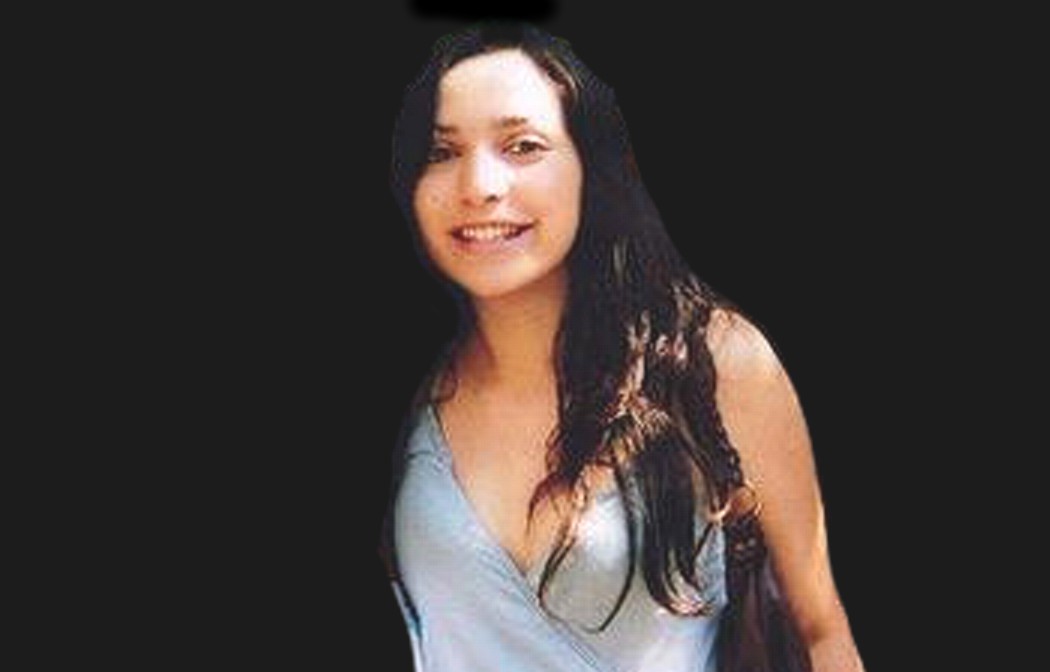
[The vastly more talented person, Meredith, who the smug and odious Sollecito still stands accused of killing]
Kermit has suggested some very tough questions in the Powerpoints post directly below.
Here are ten more of the possible dozens of unanswered questions that Katie Couric and other media interviewers of Sollecito should ask him, and we invite readers to suggest more questions in Comments below.
II should be recalled that all three suspects were brought to trial on the same body of evidence. Judges at Guede’s trial court, his first appeal court, and the Supreme Court of Cassation have all ruled that the evidence showed that it was impossible for him to have attacked Meredith alone.
Despite contradictory efforts by the defenses in the Sollecito and Knox appeal to make credible two possible sets of alternative killers, both attempts descended into courtroom farce. Right now, all of the considerable body of evidence still points ONLY at the three originally charged.
Several context points from the previous post below with this same title should be reiterated here.
1) Sollecito was NOT finally acquitted at the end of 2011; as all the media have been wrongly parroting. He still stands accused until the appeal process fully plays out - and in some similar cases, that has taken years. As he is still accused of a murder and other felonies he might be in the United States illegally.
2) The investigation and crime-scene analysis resulted in a very powerful case at trial, the trial judges’ reasoning was brilliant and precise, and they showed NO media influence, NO satanic theory, NO desperate prosecutor, NO rush to judgment, and NO hint that it had all been inspired by Knox’s and Sollecito’s quirky behavior, or by a misinterpretation of the effect of drugs.
3) Knox and Sollecito were convicted at trial based on clashing alibis, autopsy evidence, blood evidence, footprint evidence, cellphone evidence, computer-use evidence, eye-witness evidence, and so on and on. In the UK and US any ONE item might have been enough. They both refused to be fully cross examined at trial. Knox was only partly examined, about her false charge of murder against Patrick Lumumba, but even so she did herself harm.
4) A bizarre and suspect last-minute change of appeal judges resulted in a bizarre and suspect court management, a bizarre and suspect DNA consultancy, a bizarre and suspect appeal verdict, and a bizarre and suspect appeal sentencing report - which in enormous detail has been dissected by the Chief Prosecutor of Umbria, Dr Galati, in an appeal to the Supreme Court and shown to have broken Italian law in a large number of respects.
5) The entire officialdom of Perugia holds a pro-guilt view. Dr Galati holds this view. Relevant officials in Rome all hold this view. Probably 95 percent of the interested Italian population hold this view. The vast majority of Italian journalists hold this view. The Rome-based foreign reporters all hold this view. A large if unknown fraction in the UK and US populations hold this view. Behind the scenes in the NYC media, a majority seem to hold this view. Hillary Clinton and the ambassador in Rome hold this view. Knox’s and Sollecito’s lawyers at trial in 2009 seemed less than firm believers in their innocence. Both families have acted as if they KNEW there was guilty involvement all along.
While Sollecito did not take the stand during the trial or the appeal, he did make a number of voluntary written statements entitled “Notes on a Prison Journey” which were edited and given to the media by his lawyers. These notes have been meticulously translated into English by the PMF translators and are available here. They don’t show him in an innocent light.
With so many questions unanswered, it would be unconscionable for any good reporter or network to allow Sollecito to promote his book and case one-sidedly on their nationally-syndicated talk shows without answering some tough questions. Keeping in mind that a talk show is not the best place to debate forensic evidence and other intricacies of the case, we offer these ten example questions in other areas, which with Kermits questions below should start to get to the core of what Sollecito did and didn’t do on the night.
1. The Kercher family has asked that people involved in the case keep a low profile out of respect for their daughter Meredith. What effect do you think your loud promotion of this tendentious book deal will have on the Kerchers?
2. Did your publisher, Simon & Schuster, express any concern that you might yet be convicted of this murder, if the Supreme Court rules in March that you were improperly acquitted? And that if Italian officialdom is smeared, they may risk charges of calunnia?
3. You were the person closest to Amanda Knox in the days before the murder. Why did you write that Amanda was “detached from reality?” What in your view is her psychology? Is she loyal to you? And do you always see eye to eye?
4. You and Amanda were among the last people to see Meredith alive. Did you hear Meredith’s conversation with Amanda, if any, before she left to have dinner with friends? If so, what was said, and in what tone?
5. That afternoon you claim the two of you merely smoked a little marijuana but both suffered mental black-outs. Amazing. Medically very unusual. At what time precisely did you both stop remembering, and at what time did you both start remembering again?
6. If neither of you can remember what happened that night, how can you be so sure you and Amanda had nothing to do with the murder? How in that light do you account for highly incriminating forensic and computer and cellphone and eyewitness evidence?
7. Inconsistencies between Amanda’s account of what she found at her cottage the next morning, and what you said you saw when you got there, make the story seem made up. For example, you wrote that the first thing you noticed - you said that you remembered this particularly well - was one of the bedroom doors was wide open, the window was broken and the room was a mess. But Amanda wrote that the door was closed and the break-in wasn’t discovered until you conducted a search of the house. Why don’t your stories match?
8. Both of you have described how, after Meredith didn’t answer, you tried to kick down her bedroom door. It was easily pushed in later. Were you surprised that you were unable to break it down, despite having taken eight years of kickboxing lessons?
9. Were the police wrong to arrest you after you specifically and quite readily told them that Amanda had persuaded you to lie to them, and to say that she’d been home with you all night when you had consistently maintained that she wasn’t?
10. Rudy Guede, the man confirmed convicted by the Supreme Court of Cassation of murder and a sex crime, in complicity (“in concorso”) with two other people, says that you were the other two people there. Guede is eligible for parole later this decade. Do you think that his parole should be denied? Did the Supreme Court get it wrong? Is Guede the sole killer, and if so how?
Friday, September 14, 2012
Questions For Sollecito: Katie Couric, Push Back Against Sollecito’s Bluster And False Facts
Posted by Our Main Posters

Last Monday at 3:00 pm in the ABC TV1 studio on West 66th in New York city, Katie Couric launched a one-hour talk-show which will run five days a week. Next tuesday she will interview Raffaele Sollecito.
Who is Katie Couric?
In the fifteen years leading up to 2006, Katie Couric was a lively, bright and often very funny morning-show compere on NBC’s Today show . In 2006, she switched to CBS, to become the first woman to anchor the evening news. She also did a number of interviews for CBS’s 60 Minutes airing on Sunday nights.
In those years, she cultivated the broadest range of interview styles of anyone in American TV. Many of her interview questions are sympathetic puffballs. Her own husband died of cancer in 1998 when he was 42 and she 41, with two daughters not yet in their teens, so she relates unusually well to guests who have had tragedies in their own lives.
At other times, though, she can be as tenacious as a tiger. In 2008 she did a series of interviews with Sarah Palin, the Republican vice-presidential candidate, in which Palin looked far from ready for prime time. Palin and John McCain, the presidential candidate, lost the election to Barack Obama and Joe Biden by a substantial margin.
Some still blame Couric for asking Palin the few “gotcha” questions which stumped her, though in general it is accepted that Couric helped to show up somebody too misinformed, strident and shoot-from-the-hip to be a president-in-waiting. A recent movie version confirmed this.
So which Couric will viewers see weekdays on ABC? The puffball thrower, or the tiger? Almost certainly a bit of both, for ABC hope it is this danger and uncertainty in Couric’s interviews that will drag millions of viewers in daily.
The Sollecito interview next tuesday
For Katie Couric, this represents a good opportunity - she could really make news here - and maybe something of a risk. The risk comes only if she is briefed only by the Knox-Sollecito PR people and the book agents and book publishers that handle Sollecito.
She may leave her millions of viewers only dimly aware of Sollecito’s true legal status, and presuming that both Sollecito and Knox are off the hook, and that there is “no evidence”, and that those meanie Italians have done something really nefarious.
All of the media reports on Sollecito and Knox this past week that said “they were acquitted” have it seriously wrong.
This is merely the interval between the second act (the first appeal of 2011) and the third (the Supreme Court appeal 0f 2013) which will start playing out on 23 March. There could be several more acts to come, maybe including a complete repeat of the first appeal, which the Supreme Court has not hesitated to insist on before.
Meanwhile, Sollecito’s correct legal status under Italian law (along with that of Amanda Knox) is that he still stands accused of murdering Meredith, until the Supreme Court signs off on a verdict.
The risk for Couric is that if she does only a puffball interview, and allows herself to be snowed by the dishonest PR and in effect turned into yet another shill, she could come down on what could soon emerge as the losing side, and helped build sympathy for a killer.
We just saw the perfect example of this. A senior psychology professor at the John Jay College of Criminal Justice, less than 10 minutes walk from ABC’s west-side studios, swallowed the PR line on Knox and Sollecito without the slightest checking. You can read his sorry story here and here.
Since then, only an embarrassed silence.
This is a 20 point road-map of the Perugia case for the Couric people and any new readers that her show sends to TJMK and PMF. Post (2) will have some really tough questions, which Sollecito can be expected to flunk. With luck, these posts will turn Couric & company into tigers. Enjoy the hot seat, Sollecito.
1. Sollecito is not the real victim in this case
While Couric’s predecessor Oprah was snowed by the PR 18 months ago, she did to her credit remember Meredith, and closed with a huge photo of her that lingered. This is the real Meredith as an in-memoriam post described her.
Meredith really hit the ground running in Perugia. She had dreamed of it for a long time.
She bonded immediately with her two nice Italian flatmates, who were both working in town, and soon with the neighbors downstairs. Within days she had an “instant crowd’ of the girls from Leeds and other UK universities.
She liked the house, liked the clubs, liked walking Perugia, liked the culture and the fun festivals in Perugia. Her first encounters with her new boyfriend downstairs, an Italian musician, were said to be shy and sweet.
And she was focused and already working her tail off. She had won a well-funded Erasmus grant and although she wanted to work a little, she had no worries about money.
She arrived with an excellent command of Italian after two years of hard study at the European Studies school in Leeds, and at the Università per Stranieri she was clearly going to excel.
She was also studying politics and economics at the main university, which was very close, and she seemed set to go very far. her eyes were already on the powerful international bodies in Brussels.
2. Italy’s excellent justice system is very pro defendant
Prosecutors have to jump through more hoops than any other system in the world. Major errors and framings of innocent parties never make it through to a final guilty verdict. Please read here and here.
Proportionally Italy has only one-seventh the murder rate of the US and proportionally less than one-twentieth of the prison population of the US. Hardly a justice system out of control. .
3. Meredith’s murder was a cruel and depraved act
Although a key trial session on the barbaric 15-minute struggle with Meredith was closed to the public Italians know how cruel and depraved it was and how it HAD to have involved three attackers.
4. The case was well investigated and well prosecuted
The investigation and crime-scene analysis resulted in a very powerful case at trial as that long series of Powerpoints brilliantly summarises
The judges’ reasoning was brilliant and precise and showed NO media influence, NO satanic theory, NO desperate prosecutor, NO rush to judgment, and NO hint that it had all been inspired by Knox’s and Sollecito’s quirky callous behavior after Meredith died - that behavior by the way suggested they enjoyed toying with the police until they were finally arrested.
They were convicted based on clashing alibis, autopsy evidence, blood evidence, footprint evidence, cellphone evidence, computer-use evidence, eye-witness evidence, and so on and on. Quirky callous behavior (which did happen) was barely on the radar at trial.
5. Knox and Sollecito were never cross examined at trial
Had they been, they would almost certainly have collapsed almost instantly - as Couric hopefully will find out.
Instead, the defendants made repeated unchallenged statements to the court, as the Italian system allows, many highly self-serving, and when Knox took the stand only to explain why she fingered Patrick Lumumba, prosecution questions were highly hedged by prior agreement.
These are among the many dozens of open questions (more for Sollecito in our next post) which the defendants have still never confronted.
- Here is Kermit’s list of 150 questions which so far have never been answered by either of the formerly convicted perps.
- Here is Kermit on Sollecito’s footprint on the mat which Judge Micheli and Judge Massei accepted and Judge Hellman only weakly and possibly illegally rebutted.
- Here again is the Machine on RS’s various alibis the strange arc of which two years later is still unexplained.
- Here is lawyer SomeAlibi’s list of evidence points of a year ago which Hellman weakly rebutted or ignored and which still call for convincing explanations.
6. This was no lone wolf crime by Rudy Guede alone
After a fatuous failed attempt by a defense attorney to have a tall athletic staff member climb through Filomena’s bedroom window the defenses NEVER EVER argued that Guede acting alone could have done it.
They simply ignored the evidence of a rearranged crime scene in that bedroom and at appeal introduced TWO conflicting witnesses Mario Alessi and Luciano Aviello to try to show other people were involved. Both collapsed under examination.
7. Investigative and prosecution staff performed just fine
Curt Knox’s campaign and American media have carried out what looks to us like the real frame here, that of claiming (only in English) that the police and investigators and prosecution were corrupt or incompetent or driven by Satan.
NONE of this conspircacy theory is believed by anyone in Italy who knows about it. Police and investigators and prosecution had every chance to explain themselves (in Italian) in the court and newspapers and on TV. Read here and here and here and here.
8. The “guilty” trial outcomes convinced more than Italians
With few exceptions Italians continue to regard Sollecito and Knox as guilty. No wonder he is so desperate to get out of the place. He was never ever very popular there, and prior to Meredith’s murder he came across like a perverted loner with a drug habit who needed constant supervision by his father.
In 2008 when Sollecito was being transported to Verona University for an entrance exam in virtual reality (which he failed) he was yelled at by an angry crowd when the police van stopped at an autostrada service area for a restroom break. He was bundled back in and the police van took off in a hurry.
The entire officialdom of Perugia holds a pro-guilt view. Umbria’s chief prosecutor Dr Galati holds this view. Relevant officials in Rome all hold this view. Probably 95 percent of the interested Italian population hold this view. The vast majority of Italian journalists hold this view. The Rome-based foreign reporters all hold this view. A large if unknown fraction in the UK and US populations hold this view.
Behind the scenes in the NYC media a majority seem to hold this view. Some of the publishers who were offered the books hold this view. Hillary Clinton and the ambassador in Rome seem to hold this view. Many lawyers and even judges who read here hold this view. Even Knox’s and Sollecitos lawyers at trial in 2009 seemed less than firm believers in them.
Even some who knew Knox and Sollecito from way back in childhood in their home towns were unsurprised when they were first arrested and locked up in November 2007.
9. Both families face trials for attempted subversion of justice
While suggestive of a belief in their offsprings’ guilt rather than probative, both families are charged with attempts to subvert justice. Knox’s parents are being sued by the police interrogators who they claimed without evidence had abused her. (Mignini is not one of them, as he was not there.)
Charges against the Sollecito family (five of them) are more serious and are being brought by the Italian state. Read here and here and here.
10. A change of appeal judges may have been engineered
The highly qualified senior criminal judge in Perugia Judge Chiari was slated to preside over the appeal. He was mysteriously yanked at the last moment and reported angry, and instead two ill-qualified civil judges with questionable impartiality (they each had something to gain from a not-guilty verdict) presided over the appeal.
[Below: Katie Couric during a break in one of the 2008 interviews with Sarah Palin]

11. The appeal sentencing report’s quality is appalling
Our Italian lawyers say this is the most amateurish sentencing report in a murder case they have even seen. Please read here.
12. The independent DNA report’s quality is appalling
There a strong internal hint that the grandstanding American academic Hampikian might have been involved in its creation. Please read here.
13. The prosecution has lodged a very strong Supreme Court appeal
The chief prosecutor of the province of Umbria, Dr Galati, was himself until last year a deputy chief prosecutor at the Supreme Court in Rome. His expertise and credibility at this level outclasses that of all the other lawyers on the case combined. Please read here.
14. More trouble ahead for the families and defenses in other cases
Please read here. The key cases from the point of view of an outcome for Sollecito and Knox are the investigations into Alessi and especially Luciano Aviello who claimed that bribes were offered in his prison for testimony favorable to Sollecito.
That Judge Hellmann chose not to pursue that stunning claim, which could have thrown the appeal trial, is one of the points of Dr Galati’s appeal to the Supreme Court which if accepted could result in a new appeal trial.
It could also result in Sollecito’s lead lawyer Giulia Bongiorno (who is reputed to dislike him) having to take herself off the case.
15. Sollecito did a much derided interview in Italy
This was late last year after the appeal verdict. That much-watched one-hour interview with Sollecito seems to have totally bombed. Sollecito gave little away, and sounded smug, narcissistic, whiny, and sophomoric.
He probably convinced nobody of his innocence and reinforced the suspicions of those who are pro-guilt. He is said to come across 5 to 10 years below his real age, and that certainly is what happened here. After that one interview, other Italian networks were not exactly lining up for more of the same.
There are of course many excellent pro-guilt commentators in Italy, including Garofano, Sarzanini, Benedettelli, Giuttiari, and Castellini, Dont hold your breath hoping the little coward is ever put face to face with them.
16. No lawyers or media lawyers now publicly support RS
The probable problem is that they have actually got to grips with the translated court documents. Even Knox legal advisors Ted Simon and Robert Barnettt have long been silent. Please read here and here and here.
17. Several who did speak out for him looked like PR shills
Geraldo Rivera of Fox cable TV was one who bizarrely spoke out, and Jane Velez Mitchell of CNN Headline News was another. So was Joe Tacopina of ABC News, who also soon disappeared. So was Lis Wiehl. So was John Q Kelly.
18. Several good media lawyers speak out against him
In the USA Nancy Grace, Wendy Murphy, Jeanine Pirro, and Ann Coulter have all stated that they perceive guilt. Please read here and here and here and here.
19. Public relations hoaxes in attempt to help defendants
While suggestive of a belief in their offsprings’ guilt rather than probative, campaigns for both defendants have run under the Italian radar what amounted to hoaxes to mislead the American and British publics. Please read here and here.
Agents and ghost writers and publishers for the pro-Sollecito and pro Knox books also seem to fall into this category. Please read here and here and here and here.
20. Bigotry and xenophobia should be no part of any campaign
Huge strains of bigotry against Italians and black people and xenophobia against Italy have always been kept on the boil by Curt Knox’s defense campaign. Oprah Winfrey didnt realise, and she ended up in the absurd position of supporting probable white killers while pointing only to Rudy Guede, a black man, and smearing Italy.
Curt Knox’s hatchet men have made a considerable industry out of ridiculing the Italian police and the prosecution - but only in English. As explained here the police for the most part are the Italian equivalent of the FBI and considered among the finest in the world.
There were always several prosecutors at least on the case throughout the entire process, and they all followed the letter of the law. The impugning of Italian officials by falsely accusing them of crimes as Curt Knox’s campaign often does is itself a crime under Italian law.
Italians and Italian-Americans and Italian officials and black people everywhere deserve very much better than this. Katie Couric seems ideally suited to finally assert a balance and a return to decency, legality, and justice for the true victim, Meredith, and her loving family.
She should use this interview to nail Sollecito and hammer a stake through the PR campaign’s heart.
***
Next post: questions we recommend that Katie Couric put to Raffaele Sollecito.
Monday, August 20, 2012
Dissecting The Hellmann Report #4: The Contortions To Dismiss Witness Quintavalle
Posted by Cardiol MD

[Above: Images of Mr Quintavalle’s Conad store; he serves at far left, his cashier serves at far right]
Scroll down here for previous posts in this series.
Mr Quintavalle owns the Conad franchise at the lower end of Via Garibaldli, about halfway between Meredith’s place and Sollecito’s. Judge Massei in his trial sentencing report had stated this about Mr Quintavalle on page 83:
This Court deems that the testimony of Quintavalle is reliable. It was discovered that Inspector Volturno did not ask Quintavalle if, on the morning of November 2, he saw Amanda Knox in his shop.
He was asked ““ so Quintavalle recalled - about purchases made by Raffaele Sollecito. Mr. Quintavalle did not say anything about having seen Amanda Knox on the morning of November 2, 2007 in his shop because he was not questioned about this and because, as indicated by Quintavalle himself, he considered this fact to be insignificant.
This post exemplifies how the Hellmann-Zanetti web of deception uses a flood of reasons-to-doubt in its attempt to discredit Massei’s conclusion that Quintavalle was a reliable witness. Remarkably, the judges did not even recall Mr Mr Quintavalle, and mostly they work from the brief summary of his testimony in Massei’s report and little else.
Quintavalle’s testimony is key to the guilty verdicts against Knox and Sollecito, and contrary to Hellmann-Zanetti’s improper purpose; therefore they proceeded to systematically “disprove” Massei’s conclusion, stating this on page 39:
Indeed, Quintavalle asserts that she left without having purchased anything.
Verbatim from the hearing of March 21, 2009:
The Hellmann report here proceeds to selectively quote the hearing-transcript in a manner contrary to the usual and customary English-language meaning of “verbatim”. It may be that Hellmann-Zanetti meant to indicate that only the words they did quote were verbatim, and that their ellipses indicated innocent omissions. However the effect of their omissions is not innocent.
“¦If they had asked me”¦also because, I repeat, I, when the young lady came into my store, I did not see her leave with anything, because when she passed by and passed by again, when she left and I saw her, out of the corner of my eye I saw her leaving, I did not see that she had a shopping bag or anything in her hands.
PRESIDING JUDGE [PRESIDENTE]: You are speaking of the morning of November 2?
ANSWER: The morning of November 2. I don’t know if she bought anything, I don’t know. My cashier doesn’t remember if she bought anything, I am not able to say whether she bought something or not”¦”
If one wanted to maintain that perhaps Quintavalle is wrong, because she actually did purchase something, it would be correct to observe that if he could be wrong on this point, and also about the clothing she was wearing, then he could also be wrong about the identification of the young woman [giovane] as Amanda Knox.
Finally, the testimony of the witness Quintavalle does not seem reliable, and, in any case, represents an extremely weak piece of circumstantial evidence.”
Examples of Hellmann-/Zanetti’s flood of Reasons-to-Doubt [That AK/RS are Guilty] :
From Hellmann-Zanetti pages 39-43:
“Quintavalle
Another piece of evidence [uno degli elementi] on which the Court of first instance based its conviction of guilt is represented by the testimony of the witness Quintavalle, owner of a grocery store in Corso Garibaldi, not far from Sollecito’s house but also just a few minutes from via della Pergola: he in fact asserted that he saw, early in the morning of November 2, a young woman enter[sic] his store after having waited for it to open, whom he later recognized as Amanda Knox.
According to the prosecution (and to the Court of first instance), this circumstance proves that, contrary to the alibi she gave, she did not sleep at Sollecito’s house until late in the morning, but went very early to Quintavalle’s store, as she urgently needed to acquire a cleaning product suitable to clean the house in via della Pergola of her own traces and those of Raffaele Sollecito, before the police could intervene and take samples, since it was inevitable that sooner or later the alarm would be given because of what had happened.
In reality, even under the assumption that the circumstance is true, this would be a weak piece of circumstantial evidence, incapable in itself of proving guilt even presumptively; but in any case this Court holds that the testimony of the witness is not very reliable, in particular in what concerns the identification of the early”morning client with Amanda Knox.”
(1) Reason-to-Doubt #1: “”¦INCAPABLE IN ITSELF of PROVING guilt even presumptively”¦.”
The reader is being steered away from a level of doubt that is beyond-reasonable, and towards the territory of reasonable-doubt-that -AK/RS-are-Guilty.
“INCAPABLE IN ITSELF” improperly isolates the issue from all the other considerations which should simultaneously-be-taken-into-account.
“PROVING” improperly implies an inappropriate standard of “˜certainty’.
“¦.this Court holds that the testimony of the witness is NOT VERY RELIABLE, in particular in what concerns the identification of the early”morning client with Amanda Knox.
Logically “not very reliable” does not exclude “reliable” but Hellmann-Zanetti presumably don’t intend to concede that Quintavalle is reliable; this betrays Hellmann-Zanetti’s extreme bias and determination to exclude Quintavalle’s damning identification of [their client?] Knox.
Later on page 38:
In fact, he presented himself to the police only a year later, following intense urging by a young apprentice journalist”¦..”
This is a misleading reference to Antioca Fois; see Massei page 84:
He later spoke about having seen Amanda Knox because a young man who used to live above his shop, who he knew, Antioco Fois, had just graduated and had become a freelance reporter for the newspaper Giornale dell’Umbria. When he passed him, he would sometimes ask: “But do you know anything? Did you see something? Did you hear something?”
So one day Quintavalle told Fois that he had seen Amanda Knox on the morning of November 2; later he decided to go to the Public Prosecutor’s Office because Antioco Fois convinced him that this fact might be important.
So the “intense urging” was more like friendly exchanges with Quintavalle’s neighbour, a former lodger.
(2) Reason-to-Doubt #2: “In fact, he presented himself to the police only a year later”¦.”
Readers are invited to mistrust Quintavalle because he belatedly told this to the police for an untrustworthy reason, steering them further away from a level of doubt [with regard to Knox/Sollecito guilt] that is beyond-reasonable, and further into territory that is reasonable-doubt of their guilt.
Later still on page 38:
Now, what actually happened more than a year before Quintavalle presented himself to the police is absolutely not irrelevant, for the purpose of evaluating the reliability of the witness, especially from the point of view of the genuineness of his memories and the exactness of the identification.
(3) Reason-to-Doubt #3: “absolutely not irrelevant, for the purpose of evaluating the reliability of the witness”
This double-negative statement further invites Readers to regard Quintavalle as unreliable because his memories are false, and his identification of Knox is too inexact. Steering Readers yet further into a level of doubt of Knox’s guilt that is reasonable-doubt.
Yet further down on page 38:
“¦..this was a witness who ““ taking into account what he himself explained ““ took a year to convince himself of the precision of his perception, and the exactness of the identification of Amanda Knox with the girl that he saw, although he was able to appreciate the relevance of his testimony already in the days immediately following the murder.
(4) Reason-to-Doubt #4: “..took a year to convince himself…”
From Hellmann-Zanetti page 36:
“¦..took a year to convince himself of the precision of his perception, and the exactness of the identification of Amanda Knox with the girl that he saw, although he was able to appreciate the relevance of his testimony already in the days immediately following the murder.
Repetition of reader-invitation to regard Quintavalle as unreliable, because his perceptions are not precise enough for Hellmann-Zanetti, and his identification of Knox was too inexact even though he knew at that time that his testimony was crucially relevant.
The reader is being steered even further away from belief that Knox and Sollecito are guilty towards the territory of reasonable-doubt-that -AK/RS-are-Guilty.
Are we there yet? Is there reasonable-doubt-that-AK/RS-are-guilty NOW?!
(5) Reason-to-Doubt #5: “Quintavalle cannot maintain that…”
Near the bottom of Hellmann-Zanetti page 38:
...from the testimony of Inspector Volturno at the hearing of March 13, 2009, it turned out that Quintavalle and his employees and other shopkeepers in the area were shown photographs of Raffaele Sollecito and Amanda Knox, and were asked in particular to mention any possible purchases of cleaning products on the part of the couple, as this was a precise focal point of the investigation. Thus, Quintavalle cannot maintain that he did not mention what he saw on the morning of November 2 to Inspector [53] Volturno because he did not think it was a relevant circumstance.
Readers are yet further invited to mistrust Quintavalle, because his failure to “mention” everything he had seen, and his idea of “a relevant circumstance” were unacceptable to Hellmann-Zanetti.
That’s already five reasons to doubt on the first Quintavalle page alone.
See also Hellmann-Zanetti page 42:
....according to Quintavalle’s own statements ““ he only caught a glimpse of the girl, first out of the “corner of his eye” and then from a bit nearer for a few moments, but never from the front (verbatim from the hearing of March 21, 2009: “Yes, then she entered, I saw her let’s say like this, three quarters left, three quarters of the left side. I didn’t see her from the front”¦”
And Hellmann-Zanetti page 43:
“....when she left and I saw her, out of the corner of my eye I saw her leaving,”
Hellmann-Zanetti are now reduced to semantic quibbles about Quintavalle’s use of words to describe his visual-angle-of-view when he looked at Amanda Knox’s face.
But see Massei page 83:
This young woman remained impressed in his memory because of her very light coloured eyes, azzurri [light blue]. “¦. she could have been 1.65 to 1.67metres tall. Her face was bianchissimo [very light skin colour] and she apparently was about 20-21 years old.
And see Massei page 84:
...it is worth observing that the witness gave a precise description of what he saw on the morning of November 2 and also provided a description of certain physical features of the woman he saw (light blue eyes and pale face) which, together with the unusual time, may well have fixed in his memory what Quintavalle said he saw.
So by selective omissions of the contents of the Massei Report, based on the 4-dimensional observations of the Massei trial hearings, Hellmann-Zanetti use a 2-dimensional record of the Massei Proceedings, and semantic quibbles about Quintavalle’s angles of visual observation, to discredit Quintavalle’s testimony.
Even though Quintavalle - who the Hellmann-Zanetti jury never even saw - had testified convincingly at trial that it was Amanda whom he saw in his shop at opening-time on November 2, 2007, and he had held up well under cross-examination.
Enough already? Isn’t this a contorted flood of Reasons-to-Doubt-That-AK/RS-are-Guilty? Do you now believe that Quintaville is an unreliable witness?
If you now believe that Quintaville is unreliable, then Hellmann-Zanetti will have accomplished their mission.
[Below: Conad is at right and School for Foreigners at back. RS’s place maybe 500 meters behind, up the hill]
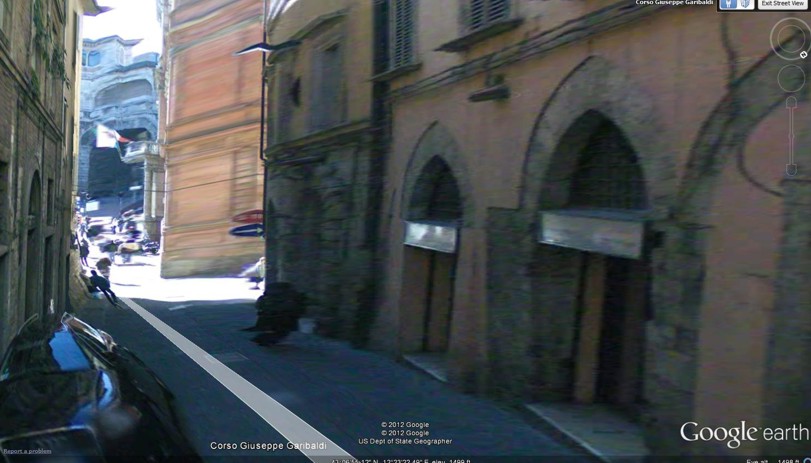
Thursday, August 16, 2012
An Overview From Italy Of The Galati-Costagliola Appeal To The Supreme Court Of Cassation
Posted by Machiavelli
Dr Giovanni Galati is the Procurator General of Perugia, and one of the two magistrates at the highest function currently working in the Region of Umbria.
Until early 2011 he worked in Rome as a Procurator General at the Supreme Court of Cassation in Rome. His life and career had nothing to do with Perugia. A native of Calabria, he spent the last and most important part of his career in Rome, and moved to Perugia only quite recently.
Working as a deputy chief prosecutor at the Supreme Court of Cassation, he developed an expertise as a “cassationist” magistrate. That means specialized in legitimacy issues, and in this role he handled several high profile cases. Among them was the recent one of Salvatore Cuffaro, the former governor of Sicily, now in jail.
Cuffaro was convicted for having favored the mafia and was sentenced to seven years. The governor was found guilty by the appeal court, but Galati impugned the sentencing by the Supreme Court on one specific aspect: while he agreed Cuffaro was guilty, he considered there was only evidence of common crime, while the lower courts failed to provide the legal requirements for proof of the aggravating circumstance of the mafia-related kind of crime.
In Galati’s opinion, Cuffaro was still corrupt and a criminal, and the difference may seem like a minor detail. His conclusion was not to overturn the verdict, but only to reduce the aggravating circumstance and shorten the prison term. Galati made the point and won, the Supreme Court cut one and a half year off Cuffaro’s prison term.
One thing to note is that the majority of Galati’s recourses are appeals in favor of the defendant. The Prosecution General, the office that brings cases to the Supreme Court, deals with procedure and legitimacy issues. Its aim is to ensure consistency and quality of work of the criminal courts.
It does not deal directly with the merit of evidence, but in fact, since the assessment of the evidence is a matter of internal logical consistency and consistency with trial actions, as well as respecting of procedure and of Supreme Court jurisprudence, the scrutiny of the lower court’s process obviously indirectly involves an assessment of the quality of evidence, and on the quality of the lower court’s reasoning on all factual points.
Giancarlo Costagliola was of course the lead prosecutor for the Hellmann-Zanetti appeal.
2. About the appeal
The Galati-Costigliola appeal is a 112-page document, with citations in an appendix to each chapter remanding to trial documents (technically the cited documents have to be considered included in the submission). The Supreme Court of Cassation however will have the entitlement of going through the whole trial documentation.
The Galati-Costagliola Appeal to the Supreme Court immediately looks different in quality and content from the previous court documents that we have seen up to now on the case. As we read it in Italian, it looks well written (except for a few grammar mistakes in the Latin parts) and stylistically homogeneous.
It dedicates extensive parts to the philosophy of law, and it includes several quotes of Supreme Court jurisprudence in the introductory and conclusive chapters.
It is an unusual appeal. Contrary to most appeals submitted by Galati as Procurator General, this one does not raise objections simply on parts of the sentencing, conclusions, or points of reasoning. Instead it attacks the verdict in its entirety. It attacks indeed all logical points and conclusions, including the part about calunnia, for which Knox was found guilty. And it goes even beyond.
Besides disputing the single points on the merit, it contains an explicit and more general attack on the whole appeal court’s approach to the case, against the general quality of their reasoning and their handling of trial and procedure, as well as against even their behavior even before the beginning of the trial discussion. There is an introductory part, and one conclusion part, which are dedicated to this kind of general criticism toward the entirety of the judges’ work.
At the beginning the document presents the summary of the ten reasons for appeal which, in Galati-Costagliola’s opinion, fatally affect the legitimacy of the judgment.
The ten questions of merit are the following:
1. The illegitimacy of Hellmann’s admission of new expert witnesses (Vecchiotti and Conti). The appointing of new experts violates the code. Galati-Costagliola clearly explains why, using both Supreme Court jurisprudence and Criminal Procedure Code. It addresses and shows the multiple instances of lack of reasoning in Hellmann’s explanations on the point, the “contradictory nature of reasoning” and its “manifest illogicality” in light of the law.
2. The failure to acquire elements of evidence. Galati-Costagliola focuses specifically on the rejection of witness testimonies, above all 1) the refusal to again hear the witness Aviello, and 2) the refusal of new tests on the knife. These decisions were taken in violation of Articles 190, 238 paragraph 5 and 495 paragraph 2 of the Criminal Procedure Code, and in violation of Article 606 (c) and (d) of the Criminal Procedure Code. There is manifest illogicality of the judgment on the point.
3. The establishing of the unreliability of the witness Quintavalle. The method declared to assess reliability of the witness violates the jurisprudence of the Supreme Court on the topic, and the insufficient reasoning violates Article 606(b) and (e) of the Criminal Procedure Code.
4. The establishing of the unreliability of the witness Curatolo. The reasons expressed are illogical, prejudicial, and violate the Criminal Procedure Code.
5. The claimed timing of the death of Meredith Kercher demonstrates a manifest illogicality in the reasoning, contains an unfounded assessment, and is manifestly in contrast with other court documentation of the case. The internal and external inconsistencies of Hellmann’s statements on the topic constitute a violation of the Criminal Procedure Code.
6. The genetic investigations: coverage of this topic in Hellmann’s sentencing report demonstrates deficiency in the reasoning, and inconsistency and illogicality [Article 606(e) Criminal Procedure Code]
7. The analysis of the prints and traces (stains) demonstrates deficiency in the reasoning, and a contradictory nature and illogicality in the reasoning [Article 606(e) Criminal Procedure Code]
8. The presence of Knox and Sollecito at Via della Pergola on the night of the murder: misrepresentation of the evidence presented is demonstrated and illogicality of the reasoning [Article 606 paragraph 1(e) Criminal Procedure Code]. Violation of procedural rules and illogicality of the reasoning [Article 606 paragraph 1(b) and (e) Criminal Procedure Code] are demonstrated.
9. The staging of the break-in (simulation of a crime): demonstration of deficiency in the reasoning and manifest illogicality of the same [Article 606(e) Criminal Procedure Code]
10. The exclusion of aggravation in the calunnia offence: the contradictory nature or manifest illogicality of the reasoning is demonstrated, also defects resulting from internal and external inconsistence with the court documents of the case: starting with the declarations by Patrick Diya Lumumba, and those by the accused, Amanda Knox, and the contents of the conversation between the latter and her mother on 10 November 2007 [Article 606(e) last part, Criminal Procedure Code].
However, the ten reasons listed above are not all of Galati-Costagliola’s arguments. Their explanations cover the core (80%) of the Hellmann-Zanetti sentencing document. But even before entering into these reasons on the merit, Galati-Costagliola make a preliminary point, a “premise” to the whole document.
The “premise” takes twenty pages and this alone is telling about the gravity of the criticism Dr Galati is going to make throughout the whole appeal document. The premise warns the readers (the judges of the Supreme Court) that in fact there is a problem of quality pervading the whole of Hellmann’s and Zanetti’s work which affects deeply their reasoning and conclusions on multiple occasion and in multiple concurring ways.
He makes clear that his criticism of Hellmann is methodological, and he points to the trial as a whole from the roots, far beyond the single topic of errors exposed in the appeal.
The “premise” of preliminary points, a short essay in itself, has its own summary of six points, each one to explain a typology of recurrent error committed by Hellmann and Zanetti. In the premise Galati explains four of the types of error, while the last two are discussed in the further chapters together with some of the points on the merit.
These are the six types of error:
1. One error “of method” affecting the logical process is the “petitio principii”, which Galati-Costagliola addresses as a recurrent, structural and pervasive method of reasoning used by Hellmann-Zanetti.
It is “begging the question”, a kind of empty circular reasoning. This is demonstrated in several chapters and points. For Hellmann-Zanetti’s reasoning, Galati-Costagliola reserve the names “paradoxical”, “disconcerting”, “useless”, “circular”, and worse in this same tone.
2. The failure to apply the inferential-inductive method to assess circumstantial evidence. This is a key point based on jurisprudence and is in fact a devastating general argument against Hellmann-Zanetti:The appeal to Cassation’s jurisprudence on the circumstantial case originates from the fact that the Assize Appeal Court did not deploy a unified appreciation of the circumstantial evidence and did not examine the various circumstantial items in a global and unified way.
With its judgment it has, instead, fragmented the circumstantial evidence; it has weighed each item in isolation with an erroneous logico-judicial method of proceeding, with the aim of criticizing the individual qualitative status of each of them ..
Dr Galati accuses the appeal court of focusing on the quality of some pieces of circumstantial evidence, instead of their correlation to each other as the Supreme Court always requires. .The appeal judges, in actual fact, deny that the probative reasoning and the decisive and cognitive proceeding of the court is to be found in the circumstantial evidence paradigm of the hypothetico-probabilistic kind, in which the maxims of experience, statistical probability and logical probability have a significant weight.
The court must reach a decision by means of the “inductive-inferential” method: it proceeds, by inference, from individual and certain items of data, through a series of progressive causalities, to further and fuller information, so arriving at a unification of them in the context of [13] the reconstructed hypothesis of the fact.
This means that the data, informed and justified by the conclusions, are not contained in their entirety in the premises of the reasoning, as would have happened if the reasoning were of the deductive type “¦ (..) A single element, therefore, concerning a segment of the facts, has a meaning that is not necessarily unambiguous.
Dr Galati cites and explains further:
The Perugia Court of Appeal has opted, instead, precisely for the parceled-out evaluation of individual probative elements, as if each [14] one of them must have an absolutely unambiguous meaning, and as if the reasoning to be followed were of the deductive type.
This error emerges from the text of the judgment itself, but the gravity of the error committed by the Court in its decision derives from the fact that even the individual elements had been acquired by the cognitive-decisioning process in a totally partial manner, isolating the sole aspect that allowed the recognizing of doubts and uncertainties in the element itself..
So Galati-Costagliola concludes ““ and this by now is obvious ““ that the Hellmann-Zanetti court followed a “deductive only” paradigm on pieces in isolation, instead of the “inferential-inductive” paradigm prescribed by Supreme Court requirements (1995).
Moreover, Hellmann-Zanetti applied a deductive paradigm of assessment only to some cherry picked aspects of the single isolated pieces of evidence, overlooking other qualities of the single piece (an example ““ my own ““ is the possible “contamination” of the bra clasp found on the floor in the murder room.) Ordering an assessment of the quality of any element as if it was a proof in isolation from the rest of the evidence is itself unlawful.
But Hellmann”“Zanetti also picked out of the evidence one aspect alone, for example it points to the theoretical possibility of contamination by touching from gloves, but does not consider the negative check results from the possible contamination sources. The interpretation of X-DNA from the bra-clasp by Vecchiotti in the conclusion is worded as if to ignore the results on the Y-haplotype, and so on.
So even single aspects/qualities of isolated items are further isolated from other aspects by Hellmann-Zanetti, and are assessed without looking for a relationship to the context. This is a core violation of the basics of jurisprudence in cases based on circumstantial evidence.
3. Refusal to acquire documentation as evidence: the definitive Guede verdict. Hellmann-Zanetti refused to acquire the documentation and to consider it a piece of evidence, without any backing from procedure jurisprudence and without providing any justification.By doing this the Hellmann court was again violating the legal boundaries. The Galati-Costagliola appeal considers this as one more type of violation, the refusal to attribute any kind of probative value to the definitive verdict on Guede, thus violating Article 238 of the Criminal Procedure Core, and bringing up a manifestly illegitimate justification. The violation is quite egregious under the code.
4. Failure to assess and to weight key elements, among which is Knox’s written “memoir”. This is a severe violation of article 237 of the Criminal Procedure Code.The usability of Knox’s “memoir” as well as its probative value were already established by the Supreme Court itself, and it was admitted into the process. Hellmann-Zanetti fail to provide the slightest logical explanation for changing the established assessment and disregarding that evidence.
5. The failure to acquire possibly important pieces of evidence. Galati-Costagliola are focused mainly on two points: 1) the knife, and the refusal of having it further tested for DNA; 2) the refusal to hear Aviello after his retraction of his claims.We know that, while the testimony of Aviello might be just not credible because of his proven unreliability, and while some may argue that thus his testimony was not “decisive”, the testing of DNA found on the knife would be a piece of evidence for sure.
But the Procurator General points out that the refusal to hear Aviello is part of a severe violation, because the Hellmann motivazioni accepts his retraction statement, considering it thus reliable, but throws out some parts of it and refuses to hear him as a witness.
So the Galati-Costagliola appeal statement includes quotes of some shocking lines from Aviello’s interrogation, to show the heavy nature of it that cannot be thrown out without assessment
A twisting of words - like “cutting-edge” which becomes “experimental” in Hellmann’s reasoning - is the illogical justification for Hellmann-Zanetti forbidding a further DNA test. The motivation is obviously bogus, and Galati backs the point with quotes from Novelli’s tehnical explanation.
6. Galati-Costagliola address a pervasive violation, claiming it recurs multiple times in the document: a violation of a kind called “misrepresentation of the evidence”.This is when the judge omits aspects of the pieces of evidence that would contradict their conclusion, expressing an obvious cognitive bias. The appeal describes this violation in different chapters (5,6,8) as occurring in the process of assessing different pieces of evidence, including witness reports, wiretappings, and other items.
3. My own assessment of the Galati appeal
As you can guess from the summary above, the appeal is rather strong, and explains many heavy implications in Italian jurisprudence so that it would be difficult for the Supreme Court to reject it.
Difficult not only because the kind of objections raised by Galati-Costagliola are devastating to Hellmann’s legitimacy (in fact it’s even more, they tend to form a picture of manipulation of the trial); and not only because Hellmann’s verdict appears to be devastating to jurisprudence generally, so much so that it would become impossible to rule on guilt in many other cases; and not only because a verdict that puts together the conviction for calunnia (a felony crime with malice) and the acquittal for murder, has a contradiction on a macro-level.
But also diificult because the same office of Cassation has already issued another definitive verdict, on the Rudy Guede case. They acknowledged that Guede did not act alone, and the Supreme Court themselves even obtained independently some elements of evidence of this, which had not been considered by the previous judges.
Accepting Hellmann-Zanetti and rejecting Galati would equate to cancel Guede’s verdict. It would require a re-write of the entire process from scratch.
Galati-Costagliola shed light on many points in good order, so I tend to be optimistic and confident in the strength of the appeal.
However I also believe there could have been something more, to make it even more strong. There are a few points ““ in my opinion - still missing, which I would have added. Four points that I miss are the following:
1. There is no mention about the analysis ““ or the lack thereof - of Knox’s lies, aka the inconsistencies in her story, her “mop-shower” alibi version, what she told prior to her false accusation. There was a partial analysis of this area of evidence in Massei, who only mentioned her lying about her behavior before Meredith’s closed door.
But a lot more could have been brought out, so many contradictions and so sharp, to demonstrate that her recollection was entirely fictional. The entire topic disappeared in Hellmann’s logic and Galati-Costagliola does not hit on the point. I think this obliteration of key evidence should have been a battlefield for the appeal, I think it could have been linked to the error of misrepresentation of the evidence.
2. Galati-Costagliola misses one point of criticism on the bathmat footprint assessment. It does make a point objecting to the manifest illogicality of Hellmann’s reasoning on the footprint analysis. But there is one point more where it could hit, one external inconsistency that could have been highlighted:Hellmann-Zanetti’s illogical reasoning on the footprint is based on a false assumption. Not only it has no basis in the acts of evidence but it is proven false. It is that Hellmann excludes Sollecito on the basis that the print was “inked” by stepping on a flat surface (proven false), and attributes it to Guede, on the opposite assumption that it was produced by immersion. I note that Galati does not address directly this introduction of false premises.
3. The appeal deals only partly with the Vecchiotti-Conti report controversy. It points to Hellmann’s contradiction on “contamination” of the knife and their failure to indicate any path for any contamination in general. But it does not say much about the bra clasp (it implies however that Sollecito’s DNA was found).Vecchiotti’s report is unacceptable when it comes to the DNA chart: it acknowledges that Sollecito’s DNA was on the clasp after all when it comes to the Y-haplotype, but in the autosome-chromosome analysis attempts to create confusion by applying principles that are incompatible with Supreme Court guidelines on evidence analysis. Also Vecchiotti desecends into inconsistency and shows her real cards when she attempts to figure out contamination paths for how Sollecito’s DNA had arrived on the clasp.
However, I think the SCC might have all the material on this point in the attachment documents from Galati.
4. One missing point important to me is that Galati-Costagliola does not point out the prejudicial and racist stance declared at the beginning and at the core of Hellmann’s reasoning.Other parts are maybe more outrageous and more directly offensive to other people and other intelligences, but the racist Hellmann’s reason to me is the most disgusting.
It is a shame that a judge of the Republic is allowed to write things like this. Hellmann-Zanetti write that it is itself “unlikely” ““ it would require a very special proof ““ that Guede and Knox/Sollecito could have just met and done something together because they are “different”, while Sollecito and Knox are “good fellows”
Hellmann-Zanetti could have legitimately used the argument that it was likely for Guede to have committed a crime alone because he had a police record. They could have used this argument, but they did not use it. Their wording was totally different. I think we can guess what the reason is why they didn’t use this argument. It would have been extremely weak.
There is a logical connection between a theoretical break in and the theft in the law firm; this logical connection is equal to (in fact much weaker than) the logical connection between a staged break in and a roommate. But there is no logical connection between crimes like a theft of a laptop in an apartment and assaulting, torturing and killing a woman: thousands, in fact hundreds of thousands, of common thieves, in Italy, do not rape and do not kill anyone.
You cannot use the criminal record of Rudy Guede as a basis for claiming it is “likely” that he could commit a crime of this kind alone. That’s why Hellmann-Zanetti didn’t use it.
Instead, they used prejudice, the racist card: instead of trying to explain why it was likely that Rudy could have done it alone, they decided to claim that it was unlikely that they would find themselves together, because they are “good fellows” (and “different”).
As you can understand, this has nothing to do with Rudy’s criminal record.
By the way, Hellmann-Zanetti know that Knox had been knowing Guede long before she became friends with Sollecito, they already knew that Knox and Guede have been seen together on more than one occasion in more than one place, and even that Guede in fact attended the cottage and was friends with other people in the cottage. In fact they knew Guede and Knox used to attend the same places, house, roads and pubs.
They also knew that both Sollecito and Guede attended Piazza Grimana and the drug circle (which is the square in front of the school where Amanda had her language classes), that they lived 150 meters from each other, walked every day the same road; and ate at the same bars.
It was also known that not only Guede alone, but both Knox and Sollecito had questionable aspects in their personalities, so that these 20-years olds were not exactly expressing a profound stability in their lives.
They knew details like: leaving university, abandoning a job after one day, public disturbance fines, drunk parties, pouring beer glasses on the heads of unknowns, flirting with clients, relational problems with roommates and other girls, bringing several men at home causing arguments with roommates, collecting violent porn, heavy drug abuse over the years, knife collecting, a possible suicide mother, a lonely childhood and introverted character under the attention of a college director, memory voids.
Nobody is perfect. These details do not mean someone is guilty of anything. But what exactly is, in Hellmann-Zanetti’s mind, the “difference” of these personalities that makes these two be so obviously “good fellows”, as opposed to Guede, to the point that it is “extremely unlikely” that they can be found together, despite the fact that they attend the same places every day?
Who can tell me what is the possible reason of this difference?
Maybe there could be a relation with the fact that in Italian “good fellows” ““ “bravi ragazzi” means, in the subtext ” my family” as opposed to the other who is an outsider.
To my eyes this reasoning of Hellmann-Zanetti turns them into individuals who deserves no respect, they gain with this the most justified contempt, they should be treated like pigs: they practically wrote “they can’t be around together with Guede because they are our friends” while “he is out”.
Two bastards dirtying my country by wearing the robes of judges. I find this disgusting. It is unfortunate that Galati-Costagliola overlook this point.
4. The Galati appeal: my final thoughts
It is not possible to understand in depth the 10 points of merit from my short summary, which in fact is just a list. By reading them, I think they show their inner logical strength. I found only one weakness, that is in one of the sub-sections of point 5, where Galati-Costagliola discuss about Guede’s skype call.
I feel it’s remarkable that I couldn’t find any other questionable point (I am rather severe).
Reason 8 appears made of several points each with a different topic. They didn’t seem especially important to me as pieces of evidence, however they exist and are part of Galati-Costagliola criticism of Hellmann’s reasoning.
Reason 9 is effective but I would have used much more extensively the elements of evidence available and place them in line before the judge’s faces. Galati-Costagliola prefer to direct their objection to the inconsistence of Hellmann-Zanetti.
The part where Galati sounds more outraged is Reason 10, about the Calunnia. In this part in fact Hellmann sounds most “FoA” and offensive. In fact I think I have never read before a Cassation recourse so scathing as the Galati-Costagliola document seems to be on the Hellmann’s report.
Reading through the whole Galati document in Italian, you come upon expressions addressing the lower court’s work (repeatedly) with terms like “grave error” and “grave behavior”, you find also “disconcerting shallowness”, or the accusation of “ignoring the law”.
In the C&V report section Galati-Costagliola have some sarcastic lines such as: “how is it now they suddenly have become experts?”. In other parts you read the word “prejudice” or “obvious bias”, some of the parts of the Hellmann-Zanetti report are called “offensive” and “gratuitous”, and you also encounter the term “insinuation”.
Galati-Costagliola devolve significant attention to their method error in logic called “petitio principii”. Now, in the traditional scholarly logic, there is a list of thirteen kind of typical “logical errors” divided in three groups: the errors of the kind “fallacia in voce” (due to misusing words in their meaning concepts) , “fallacia in re” (about getting facts wrong in the direct logical use of them) and “fallacia in deductione” (error in inference process): there are four types of “fallacia in re” and five types of “fallacia in deductione”.
The “petitio principii” (implicit circular reasoning) is one of the five types of “fallacia in deductione”. Galati-Costagliola focus on this and on another case of “fallacia in re” called “corax”, but in fact in Hellmann-Zanetti there are also severe cases of logical errors of other kinds of “fallacia in deductione” and of the kinds of “fallacia in re”. Which may not matter too much.
This was my final thought. I hope this can help readers to gain a rough idea of what the Galati-Costagliola Appeal to the Supreme Court looks like, its structure, its kind of arguments, and assess its qualities.
If the Supreme Court of Cassation accepts the appeal, I would consider the battle for justice in this case as won. I know that the Kerchers may need to see the end of the whole process. But to me, the fact of having the Galati-Costagliola appeal means itself half victory achieved.
This document, as you know, was issued by the highest magistrate in Umbria and what will remain in history is the forcible assertion that Knox and Sollecito are murderers beyond any doubt as expressed by Dr Galati in this document and elsewhere, as well as his outrage for the disgusting Hellmann-Zanetti trash-verdict.
This stance will never go away.
Friday, July 27, 2012
Heads-Up To The Amanda Knox Forces: A Case Showing How Closely The US and Italian FBIs Co-operate
Posted by Peter Quennell
Meet Doctor Mark Weinberger.
That report about his arrest in Italy was broadcast in 2009. We last posted on him here.
Weinberger was apparently a wildly successful doctor who ran a sinus clinic in Indiana and lived a wildly affluent lifestyle a few milers north outside Chicago. In 2004 he disappeared off his large yacht which was then anchored at a Greek marina, and for six years his (very impressive) wife Michelle presumed he was dead.
In the meantime she had found out that he had actually been running a huge fraud, scamming health insurance and the US government via false billing and unnecessary surgery (often botched) for many millions. And that far from being left comfortably off, she was financially wiped out.
In 2006 in absentia she divorced Weinberger and started over.
In 2009 Weinberger was captured in the Alps by the Italian equivalent of the FBI and returned to the United States as soon as his extradition was requested. In perhaps 99 percent of all US-Italian extradition cases, the fugitives are handed over by both governments very promptly. This sure wasn’t any exception.
Weinberger began to lose the first of numerous civil suits a year ago, and on wednesday he pleaded guilty to 22 criminal charges in federal court.
His prison term is set at ten years.
One moral of the tale apparently still not learned by Steve Moore and Bruce Fischer and their hapless ship of fools, so desperate for approbation, is this: much or most of the time it is the fine Italian equivalent of the FBI that they are misrepresenting and defaming.
In the past two weeks alone, we have seen new ramblings by Saul Kassin and Nigel Scott (engineered by Bruce Fischer) that to any informed lawyer are quite crazy. Kassin and Scott clearly didnt have the slightest idea WHO they were defaming or accusing of crimes.
Or how much more determined thier defaming makes the Italian FBI and other law enforcement agencies and the courts to give Amanda Knox (or Curt Knox or Edda Mellas) no special breaks.
The daffy Steve Moore first introduced this confusion way back here. And of course Bruce Fischer, Curt Knox’s hotheaded chief hatchet man, sustains it up to this day.
Eighteen months ago, Chris Mellas (whose business in Seattle is doing well) sensibly recommended from Perugia that the Knox campaign should finally acquire some cool heads and some REAL experts, and toss the trouble-making grand-standers they had acquired over the side.
Perhaps predictably, Curt Knox (whose business in Seattle is doing badly) reacted red-faced and steaming, and shot this seemingly quite smart idea down. So the abrasive, misleading, very amateur campaign goes on.
***
Added. We are now told that Frank Sforza and David Anderson are in Seattle, and Sollecito will be there soon, to actually jack up the level of defaming in the RS and AK “we were the victims” books being written.
Wow. THAT is Curt Knox’s end-game?l He ran that one past Chris Mellas? It seems universally believed in officialdom in Rome and Perugia that Curt Knox KNEW all along that Amanda did it. Apparently with good evidence.
What will he do if they charge him?
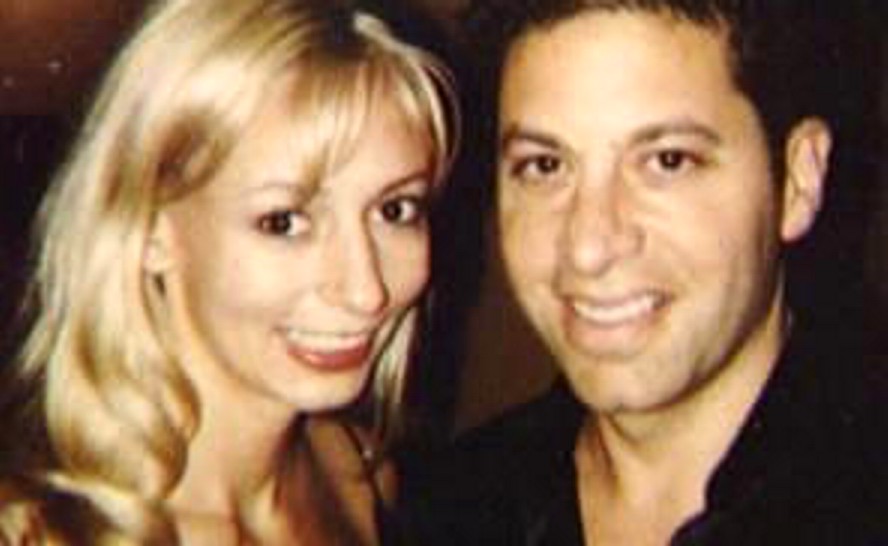
Wednesday, May 09, 2012
An Associate Of Knox PR Heavy David Marriot Has Been Bullying Meredith’s Father Online
Posted by Glinda The Good
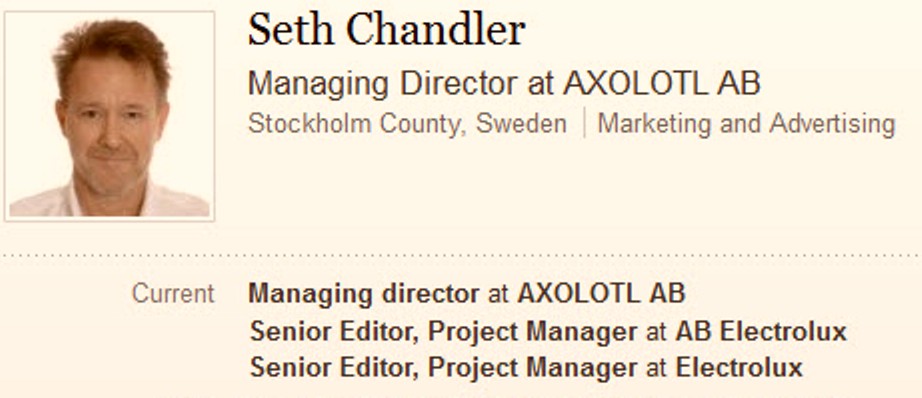
Yet another example of Curt Knox’s abusive public relations campaign at work.
We have long heard that the PR run for Curt Knox by David Marriott in Seattle controls all the pro-Knox anti-Italy message everywhere. David Marriott unwisely claimed this, in fact, right after Amanda Knox returned to Seattle. See here.
The PR is said to abuse reporters who dont go along, reward those that do, and fan out nasty commenters around the web to post selling points under various false names. It presumably does that to make the movement look spontaneous and big. An expanding but questionable technique which goes by the name astroturfing.
Every month more evidence piles up, suggesting that online comment threads and forums are being hijacked by people who aren’t what they seem.
The anonymity of the web gives companies and governments golden opportunities to run astroturf operations: fake grassroots campaigns that create the impression that large numbers of people are demanding or opposing particular policies. This deception is most likely to occur where the interests of companies or governments come into conflict with the interests of the public. For example, there’s a long history of tobacco companies creating astroturf groups to fight attempts to regulate them.
After I wrote about online astroturfing in December, I was contacted by a whistleblower. He was part of a commercial team employed to infest internet forums and comment threads on behalf of corporate clients, promoting their causes and arguing with anyone who opposed them.
Like the other members of the team, he posed as a disinterested member of the public. Or, to be more accurate, as a crowd of disinterested members of the public: he used 70 personas, both to avoid detection and to create the impression there was widespread support for his pro-corporate arguments. I’ll reveal more about what he told me when I’ve finished the investigation I’m working on.
The Knox PR astroturfing operation now has Meredith’s father John Kercher and his fine new book in its crosshairs, and for some days it has been raining contemptuous abuse. .
Officialdom in Perugia and Rome and the Italian Supreme Court all seem to know that the Knox-Mellases KNEW Amanda Knox was involved in the crime against Meredith almost as soon as they arrived in Perugia, and that they have been trying to cover that up ever since.
The PR scheme had already swung into operation by then, but the Knox-Mellases made the fateful choice to stick with it regardless, instead of maybe more wisely switching off the PR and turning to a good American lawyer to spread the word instead. Curt Knox recently claimed, before Amanda’s “innocent” persona started to implode, that using PR was one of the best choices he ever made.
This image above is of Seth Chandler, the managing director of Axolotl AB, a public relations firm linked to David Marriott’s which does the usual advertising, copy doctoring, social media campaigning, and so on. The image was captured online before it was hurriedly disappeared.
Seth appears to be the same chap caught red-handed the other day propagating the all-too-familiar FOA selling points while sliming the family of Meredith, who is the real victim here. Under an article on Worldcrunch which reported the imminent release of John Kercher’s book “Meredith” Seth Chandler was observed repeatedly posting that John Kercher (and others there trying to explain the truth) should simply STFU..
With only a couple of exceptions, real names of identifiable people are not used by the PR. We’ve seen them, we’ve read them, but this appears to be only the second time (after “Bruce Fisher of New York”) that one of the anonymous PR operatives/contractors has been exposed for what and where he is. Perhaps we might expect a few more.
For four years in the US and the UK, with big money at stake, the operatives have bashed Italy, the Italian justice system, Italian culture, and the Italian law enforcement agencies involved in the case. The operatives have slimed the Scientific Police, the prosecutor Mr Mignini, the prosecutor Ms Comodi, the British press, the Italian press, the Kerchers’ lawyer Mr Maresca, and all the prosecution witnesses. In various postings they have accused many of these people of crimes, an imprisonable felony in the US.
They have bashed the lay judges in the court because they wear their tricolour sashes routinely as a badge of office. They have claimed that this is an anti-American display. They have decried the Italian courtroom because behind the lead judge a crucifix hangs there.
The operatives have thrown mud at anyone they perceive as dangerously surfacing any hard truth about the case. Respected journalists have received exceptional abuse. Any perceived enemy not so much of Amanda Knox herself as the defense narrative of the murder and the legal processes can expect to get roughed up.
So it’s quite a game-changer when Seth Chandler, or “Seth C” as he now wants to be known, the managing director of Axolotl PR, is apparently caught red-handed telling John Kercher to STFU. Seth Chandler has claimed as he tried to wriggle off the hook that “no one paid” him to say STFU, and that anyway PRs would never say such a thing. Really? But the abuse was right there in his name.
Seth Chandler also works for Electrolux. Its competitors are are Dyson, and LG. I wouldn’t imagine that he employs the same tactics for firms, though I haven’t yet checked his Amazon customer reviews.
Shame on Seth Chandler - and on Curt Knox, whose vile temper reverberates throughout this case and some increasingly believe sent Amanda Knox over the top.
Wednesday, March 14, 2012
Rome Appeal Court Rejects Vanessa Sollecito’s Appeal For Reinstatement In The Carabinieri
Posted by Peter Quennell
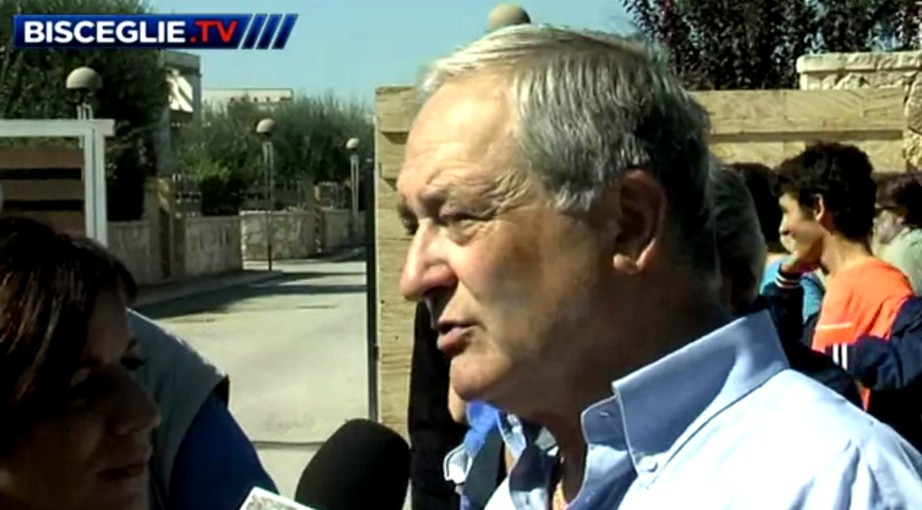
[Above and below: Francesco, father of Vanessa and Raffaele, outside their Bisceglie family home late 2011]
In 2008 Vanessa Sollecito and her father Francesco were caught on tape discussing the manipulation of Rome politicians into forcing changes upon the investigation team in Perugia.
Vanessa was fired from the Carabinieri the prestigious Italian national civil-military police force in November 2009 for demonstrating behavior and psychology inappropriate to a law enforcement officer’s job.
Our Italian poster ncountriside has just alerted us to the posting of the official statement that her appeal has been turned down.
The European Court is quoted in that report as confirming that national members have the right to fire official staff for psychological and behavioral cause.
The Carabinieri carried out a very thorough investigation which included the secret bugging of her mobile phone and her father’s phone. Jools translated one key conversation here. Her father suspects they are being bugged by the police but she blithely talks on, digging them in deeper.
This ruling was probably posted when Vanessa Sollecito was already in the air bound for Seattle (see the post below) but she would have known it was coming. This does not bode well for the criminal trial she faces along with her close family, possibly starting in Bari at the end of this month. The charges could incur prison terms.
The Sollecito family arc has almost never been reported on in the English language press. In 21 June 2008 Tom Kington of the Guardian did file this brief report.
The investigation into the murder of British student Meredith Kercher in Italy took a dramatic twist yesterday when the family of one of the suspects was accused of attempting to interfere with the inquiry.
Police tapping the phones of the father of Italian student Raffaele Sollecito overheard discussions that appeared to suggest plans being made to get senior politicians to use their influence and get detectives whom the Sollecitos considered hostile taken off the case. The phone tap information is in files handed over to lawyers as magistrate Giuliano Mignini officially completed the investigation into the strangling and stabbing of Kercher, from Surrey, who was found on 2 November semi-naked in a pool of blood in her bedroom in Perugia.
‘We’ve got to flay the Perugia flying squad,’ a family member was overheard saying, according to the Italian newspaper Corriere della Sera. ‘If we can get rid of the head of homicide and that other one, we’ll be OK.’
Relatives of Sollecito, including his sister, a policewoman, were also overheard discussing politicians who could help their case. Giulia Buongiorno, a lawyer and MP in Silvio Berlusconi’s ruling coalition, has now been retained to represent Sollecito. ‘She can help out on this case at a political level,’ Sollecito’s father was overheard saying.
Sollecito’s father, Franco, a well-to-do doctor from Bari in southern Italy, has campaigned to prove his son’s innocence, even to the point of allegedly leaking to a TV station a video obtained from the crime scene showing Kercher’s corpse, as well as highlighting perceived errors by the investigators, including the delayed recovery of parts of Kercher’s bra strap which were found to carry Sollecito’s DNA.
Police are holding in custody Sollecito, 24; his former girlfriend and Kercher’s flatmate, American student Amanda Knox, 20; and a third suspect, Rudy Guede, 21. All three deny involvement in the vicious killing.
As you can see here, Italian reporting like that translated by Jools usually includes a lot more damning detail.
Wednesday, February 15, 2012
Weighing The Ten Points On Which The Perugia Chief Prosecutor’s Supreme Court Appeal Is Based
Posted by brmull
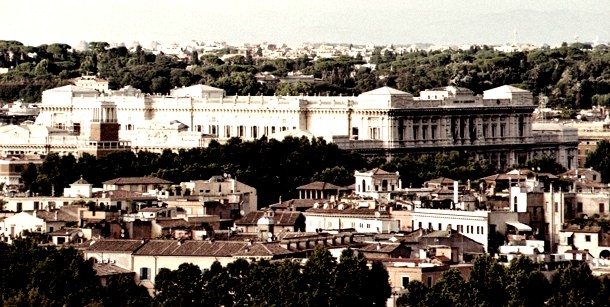
[Above: the Supreme Court of Italy seen from the south-east across the River Tiber]
The Chief Prosecutor and Deputy Chief Prosecutor of Umbria base their formidable appeal on ten points repeated here from ZiaK’s excellent translation below.
The reasons for the appeal to Cassation which Perugia’s General Prosecution presented today against the acquittal verdict of Amanda and Raffaele are based on ten points of the second-level verdict.
The first is the lack of grounds for the decision, in the decree of 18 December 2010, to allow the forensic testimony/expert witness in the appeal judgement.
The second, in contrast, concerns a contrary decision: the decision to not allow a new forensic investigation requested by the prosecution at the end of the ruling discussion. In the appeal to Cassation it is written that the Appeal Court’s rejection reveals “contradictoriness/contrariness and demonstrates manifest illogicality in the grounds for the judgement/reasoning report”.
The other points deal with the decision by the Appeal court of Assizes of Perugia to not hear the witness Aviello, also the definition of “unreliable” [in the Hellman Report] with reference to the witnesses Roberto Quintavalle and and Antonio Curatolo, also the time of death of Meredith Kercher, also on the genetic investigations.
As well as the analyses of the prints and other traces, also the presence of Amanda and Sollecito in via della Pergola, also the simulation of a crime [the staged break-in], and also the exclusion of the aggravating circumstance of the crime of “calumny”.
1. I agree that the appointing of the independent experts was unjustified, because they were essentially just another opinion, a sort of tie-breaker, applying 2011 standards to 2007 evidence, who were revealed to have pre-existing biases about the questions posed to them.
Independent experts should be a piece of evidence, not a final arbiter. I know the Kerchers opposed the appointment of these experts (I don’t know about the prosecution) so clearly they weren’t a consensus choice, as is preferred whenever independent experts are employed.
2. I agree that if Conti and Vecchiotti were allowed to judge the scientific police by 2011 standards, then the court should have allowed testing using highly sensitive 2011 technology. Furthermore Dr. Stefanoni was left to defend her work against the academic experts, without any back-up from Dr. Novelli who is more than a match for the independent experts in terms of credentials.
3. I’m on the fence as to whether the court should have recalled Aviello to discuss why he had recanted his testimony. I don’t know what the legal procedure is when a witness recants while the trial is still underway.
4. I strongly agree that the decision to recall the man in the park, Curatolo, and then determining that the old man’s memory was unreliable four years after the fact, was completely inappropriate. Curatolo’s testimony at the first trial was more than adequate. Nothing was learned from this exercise except that his memory has become worse with time (whose hasn’t?) and that he subsequently got in trouble with the law, which is overly prejudicial.
5. If the court insisted on recalling Curatolo to try to assess his reliability, they should have done the same for the store owner Quintavalle. Instead he was deemed unreliable based on a cherry-picked selection from his 2009 testimony.
6. On the time of death, I’m one of those who believe Hellmann got it right, but it has no bearing on the defendants’ guilt or innocence, since they have no alibi for either time. I look forward to the prosecution’s argument on this.
7. I agree that Hellmann’s decision to accept the defense explanation for the footprints was arbitrary and not justified by his motivations report.
8. The luminol traces in Filomena’s room were improperly determined to be footprints. They were then lumped in with the footprints in the hall without any separate attempt at explanation.
9. I agree that the Court’s determination that the defendents would not lie about being at the cottage, simply because they were “good kids” is outrageous. (In the U.S. you can’t use character evidence to decide innocence or guilt, and doing so would mean a mistrial. I’m not sure about the situation in Italy.)
10. I agree Hellmann’s explanation for the simulation of a crime was a sham, in which he accepted all of the defense arguments and showed no curiosity at all about whether this scenario could actually happen. The court had clearly made up its mind about the case already and decided to just shove the staged break-in, a crucial part of the case, under the rug.
***
*The prosecution also wants to add “aggravating factors” to the charge of calumny. This is a freebie. I don’t know if it will have any bearing on the appeal.
**The fact that Hellmann seems to have applied the “reasonable doubt” standard to individual pieces of evidence, when this should only apply to the case as a whole, seems like a huge basis for appeal. I’m glad to see the prosecution bringing this up.
Perugia’s Excellent Umbria24 Posts Details Of Dr Galati’s Extremely Tough Supreme Court Appeal
Posted by Peter Quennell

Italian lawyers are already remarking that Dr Galati’s appeal as summarised below is as tough as they ever get.
In their view the Hellman report reads more like a defense brief than a balanced appeal-court outcome in a murder trial. Both judges were put on the case on mysterious instructions from Rome, suggesting that the minister of justice had perhaps been leaned on - the judge pushed aside was extremely annoyed.
Both Judge Hellmann and Judge Zanetti, while undeniably good judges in their own fields (business and civil), are vastly less experienced at criminal trials than either Judge Micheli or Judge Massei. The entry in the Italian Wikipedia describes them thus.
Although the Assize Court of Appeal was to be chaired by Dr. Sergio Matteini Chiari, Chairman of the Criminal Division of the Court of Appeal in Perugia, in circumstances not well understood Dr. Claudio Pratillo Hellmann, who chairs the Labor Chamber of the Court, has been called on to preside over the appeal court,
The judge to the side of the main judge, Dr. Massimo Zanetti, came from the Civil Section, and both had had limited experience with criminal trials both rather remote in time (only the cases of Spoleto and Orvieto).
Judge Hellmann’s announcement of the verdict on the night was very odd, suggesting he had been outnumbered and was embarrassed. Remarks he made the next day seemed to confirm that. The weak sentencing report is said to be not his work, and was written by Judge Zanetti.
The Supreme Court of Cassation could insist on a complete new appeal trial or a partial new trial in Perugia if it accepts any of Dr Galati’s arguments at all. His appeal statement appeal is in three tiers, and a reversal could be ordered at any tier..
1. The Hellmann Court’s wide scope was illegally far too wide
Italian judicial code is very clear on this. They MUST stick to just the appealed items and not wander all over the map. Judge Zanetti was quite wrong at the start to declare that everything was open except the fact that Meredith had been murdered.
2. The DNA consultancy by Stefano Conti and Carla Vecchiotti was illegal
Defenses had every chance to attend the Scientific Police testing the first time around. It was a slippery dodge to skip those tests and then slime them. They had every opportunity at trial to throw aspersions. They are not meant to shop around.
3. There are many problems of wrong logic, evidence, and witnesses
The Massei trial sat through weeks and weeks of skilled prosecution presentations of the evidence including the forensic evidence and the many witnesses. The Hellman court got to see almost none of this and heard mostly from the defense.
This translation is from Umbria24 by our main poster ZiaK.
Meredith case: the prosecution appeals to Cassation: the acquittal verdict should be “nullified”.
For the Chief Magistrates of the [Umbria] Prosecution, “it was almost exclusively the defence arguments which were taken heed of”
By Francesca Marruco
The first-level conviction verdict was “complete and thorough” while the verdict of the second-level is “contradictory and illogical”. For this reason, the General Prosecution of Perugia asks the Cassation to revoke or invalidate it.
“We are still extremely convinced that Amanda and Raffaele are co-perpetrators of the murder of Meredith Kercher” said the Chief Prosecutor of Perugia, Giovanni Galati and the Deputy Chief Prosecutor, Giancarlo Costagliola.
Verdict that should be revoked
“The second-level verdict should be annulled/revoked…. There are precise reasons for revoking it”, Mr Galati went on to say. In the Hellman reasoning report on the verdict with which the second-level judges acquitted the ex-boyfriend and girlfriend “there are so many errors, and many omissions. There is inconsistency in the grounds for judgement, which brings us to nothing.”
“It is as if they had ruled ex novo [anew] on Meredith’s murder” added the Deputy Prosecutor, Giancarlo Costagliola, “basing their decision solely on the arguments of the defence.”
“Normally the appeal judge evaluates the reasoning procedure of the first-instance judge and compares it to new elements. But this one missed that out altogether: there is no comparison between the checks carried out in the first and second instances. Only what was carried out during the appeal was evaluated.”
Only defence arguments were taken heed of
For the magistrates, in fact, the second-level judges “took heed, almost exclusively, of the arguments of the defence consultants or the reconstruction hypotheses that were largely to the benefit of the defense theses”.
The prosecutors who authored the appeal [to Cassation] also criticized the “method used”. “The first-instance verdict”, they wrote, “was summarized in just a few lines”,
“The verdict [which we] challenge completely ignored all the other aspects which corresponded with the accusation’s hypothesis, all the aspects which, on the contrary - as was seen in the reasoning report of the first-instance verdict - had been rigorously pointed out and considered by the Assizes Court [trial court] in its decision.”
“In examining the individual [items of] evidence, the challenged sentence has fallen into consistent procedural error in the weaknesses and evident illogicality of the grounds for its decision.”
Prejudice by the two appeal judges
For the General Prosecution magistrates, the second-level [first appeal] judges appear to have shown “a sort of prejudice” with the “infelicitous preamble of the judge [the author], who is supposed to be impartial”, when he declared that “nothing is certain except the death of Meredith Kercher”, which to the others [Mr Galati and Mr Costagliola] is nothing more than “a resounding preview/forecast of the judgement” and a “disconcerting” affirmation.
The ten points of the appealThe reasons for the appeal to Cassation which Perugia’s General Prosecution presented today against the acquittal verdict of Amanda and Raffaele are based on ten points of the second-level verdict.
The first is the lack of grounds for the decision, in the decree of 18 December 2010, to allow the forensic testimony/expert witness in the appeal judgement.
The second, in contrast, concerns a contrary decision: the decision to not allow a new forensic investigation requested by the prosecution at the end of the ruling discussion. In the appeal to Cassation it is written that the Appeal Court’s rejection reveals “contradictoriness/contrariness and demonstrates manifest illogicality in the grounds for the judgement/reasoning report”.
The other points deal with the decision by the Appeal court of Assizes of Perugia to not hear the witness Aviello, also the definition of “unreliable” [in the Hellman Report] with reference to the witnesses Roberto Quintavalle and and Antonio Curatolo, also the time of death of Meredith Kercher, also on the genetic investigations.
As well as the analyses of the prints and other traces, also the presence of Amanda and Sollecito in via della Pergola, also the simulation of a crime [the staged break-in], and also the exclusion of the aggravating circumstance of the crime of “calumny”.
Missing assumption/acceptance of decisive evidence
In the appeal to Cassation there is also mention of the “missing assumption/acceptance of a decisive proof”
In other words, of that proof [presented at trial court] which consisted of “the carrying out of the genetic analysis on the sample taken from the knife by the experts appointed by the Court during the appeal judgement, who did not carry out the analyses of that sample, thus violating a specific request contained in the [orders given to them] when they were assigned to the expert-witness post”
“In the second-level [Hellman] verdict”, the magistrates said, “the judges sought to refer to this in their own way, by speaking of an “experimental method” by which these tests/checks could be carried out.
But this is not the case”, said Deputy Chief Prosecutor Giancarlo Costagliola: “Dr Novelli [the prosecution’s DNA consultant at appeal] spoke of cutting-edge technology, not of experimental methods”.
Tuesday, February 14, 2012
Umbria Attorney-General Galati Files 111-Page Supreme Court Appeal Against Hellmann
Posted by Peter Quennell
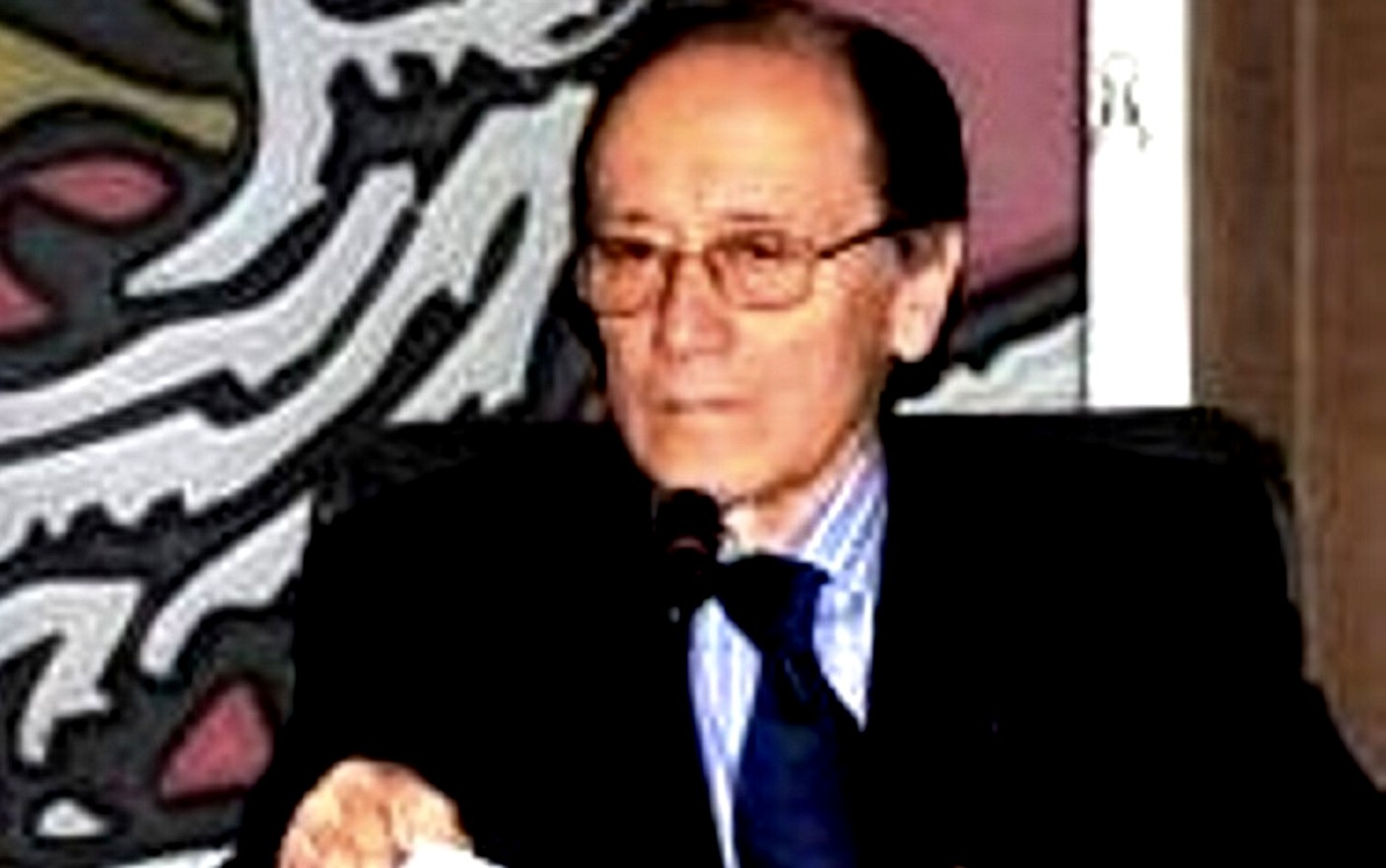
[We are told that this is AG Giovanni Galati at the recent justice info system announcement]
In submitting his 111-page appeal to Cassation Attorney General Giovanni Galati was extremely scathing in his remarks.
What Mr Galati has stated is that the appeal court of Judge Hellman exceeded its appeal mandate by far and tried to run a repeat trial at the first level, without the benefit of all the witnesses or a repeat presentation of evidence and cross-examination.
That overreach claim may resonate very strongly with the Supreme Court of Cassation which has historically repeatedly showed its distaste for first-appeal judges and juries who they seem to think too often overreach and must be restrained.
Cassation would already seem predisposed to any arguments coming from Attorney General Galati, as he was an assistant prosecutor general there, and predisposed against Judge Hellman, who has handled very few criminal cases (apparently none at all involving DNA) and produced previous quirky criminal-trial outcomes.
Book publishers might like to note that this could take two to five years to play out if it bounces back and forward several times between Rome and Perugia. Also that Italy’s law of calunnia may be applied to any wrong claims made in Knox’s and Sollecito’s prospective books.
Knox stated at trial that she was treated well on her interrogation night. Even so she still faces her own charges of calunnia. Her parents likewise. And Sollecito’s parents face a trial for evidence tampering and political manipulation.
Any books would seem to need to be moving targets at best. Maybe no paper version.


